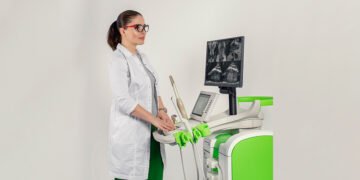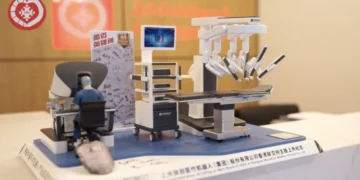Cystitis, or inflammation of the urinary bladder, is one of the most common diseases. Women are more predisposed to this disease because the female urethra is shorter and wider. In men, cystitis usually develops in adulthood, often associated with urinary retention caused by prostatitis or prostate adenoma.
Cystitis can be acute or chronic. Acute cystitis often affects otherwise healthy women without any obvious pathology of the urinary tract. Chronic cystitis is defined as cystitis that recurs at least 2–3 times a year. The disease typically presents with frequent and painful urination, a constant feeling of incomplete emptying of the bladder, and discomfort in the lower abdomen. In acute cystitis, fever up to 38°C and blood in the urine are also characteristic.
What causes cystitis?
ranging from simple exposure to cold to sexual intercourse, which may introduce infection (the so-called “honeymoon cystitis”). It is often caused by E. coli, chlamydia, ureaplasma, mycoplasma, as well as poor personal hygiene, hormonal imbalance, use of antibiotics, or weakened immunity.
The cause of non-bacterial (interstitial) cystitis is unknown. Possible explanations include psychological, immunological, or neuropathic disorders, deficiency of the bladder’s protective layer, or the presence of toxic substances in the urine. However, none of these theories are definitively proven. It is assumed that the true cause may be a deficiency of glycosaminoglycan, a structural molecule lining the bladder, which allows urinary substances to penetrate the bladder wall and cause inflammation.
Who gets cystitis?
Cystitis mainly affects women, which is related to the anatomical structure of their urinary and reproductive systems. The female urethra is wide, straight, and short (2.5–3 cm), which allows bacteria from the vagina and anus to easily enter the bladder. Men also get cystitis, but it is rarer due to their longer and narrower urethra (15–30 cm). The disease can also be seen in children and the elderly.
Girls are three times more likely to get cystitis than boys. About 20–25% of women experience some form of cystitis at least once in their lives. Around 10% have chronic symptoms almost constantly.
While women suffer from cystitis more often, men tend to feel urethritis symptoms more acutely and earlier (because of their longer and narrower urethra). In women, the symptoms may be milder and sometimes unnoticed unless cystitis develops.
How to recognize cystitis?
It is usually possible to recognize cystitis without complex tests, though it does have specific features. Signs include:
- Frequent urination (normal is about 4 times per day);
- Strong urge to urinate with little urine output;
- Painful urination;
- Urgency, especially at night or early morning;
- Discomfort or pain in the groin area;
- Feeling of urethral tightness;
- Unpleasant smell of urine;
- Dark or discolored urine (though this can also happen after eating certain foods like beets);
- Difficulty urinating;
- Dull pain in the lower abdomen;
- Nervousness or irritability.
Other possible symptoms include:
- Slight or significant fever;
- Blood at the end of urination;
- Purulent discharge from the urethra;
- Aching sensation, especially in the lower back.
If you have several of these symptoms, you should start proper treatment promptly. Otherwise, acute cystitis can become chronic and negatively affect your personal and social life.
In children:
Acute cystitis usually presents with frequent and painful urination, which in girls may resolve quickly (in 2–3 days) with antibiotic treatment. Boys may occasionally develop acute urinary retention due to sharp pain at the bladder neck, with pain radiating to the perineum, anus, and genitals. Because of the strong urge to urinate, false incontinence can occur, especially in children aged 7–12 who may not reach the toilet in time.
Blood at the end of urination (terminal hematuria) is due to inflammation of the bladder lining. Dark urine is caused by a high concentration of leukocytes and bacteria.
Fever is uncommon in acute cystitis because there is little systemic absorption from the bladder. If fever or chills occur, it may indicate kidney involvement (pyelonephritis). In young children, fever may still appear, making it harder to rule out acute pyelonephritis. The younger the child, the more general and fewer local symptoms there are.
Urethritis symptoms include:
- Burning during urination;
- Blood in the urine;
- Incontinence;
- Frequent or infrequent urination;
- Discharge from the urethra, usually in the morning. With bacterial infection, the discharge is purulent, greenish, and foul-smelling. In gonorrheal urethritis, it may appear as a drop of white pus in the morning.
Treatment of cystitis
It’s important to remember that folk remedies like herbal teas are supportive, not primary treatments. They can restore urinary acidity and mechanically flush the bladder but do not destroy bacteria.
All specialists today agree that the most reliable and fastest treatment for cystitis is the use of specific antibiotics, prescribed individually for each case.
How to prevent cystitis?
- Avoid getting cold.
- Maintain good personal hygiene to keep bacteria from entering the urinary tract.
- Drink plenty of fluids (cranberry juice and lingonberry juice are especially helpful).
- Go to the toilet regularly; retaining urine promotes bacterial growth.
- Avoid tight clothing and sitting too long in one position.
- Prevent constipation.
- Strengthen your immune system.
Are anti-inflammatories and antibiotics enough?
Unfortunately, no. You should also avoid spicy, salty, smoked foods, alcohol, chocolate, coffee, tomatoes, milk, and carbonated drinks as they alkalize urine. Drink plenty of fluids (1.5–2 L daily). Cranberry juice is very helpful. Herbal teas (kidney tea, bearberry, lingonberry leaf, field horsetail) have diuretic and anti-inflammatory effects.
They should be taken until symptoms disappear and then for another 5–7 days. During this time, avoid smoking, rest, use a warm compress between the legs, and pay special attention to hygiene. Washing should be done from front to back with warm boiled water and gentle soap or an intimate hygiene product.
Only this comprehensive approach — antibiotics, diet, fluid intake, rest, and hygiene — ensures that you can quickly and completely recover from infection.
Finally: Even with mild symptoms of cystitis, do not delay visiting a doctor. With proper diagnosis and treatment, you can easily overcome the discomfort and the disease itself.
Karazanashvili’s Robotic Center offers cystitis treatment in accordance with world medical standards.







